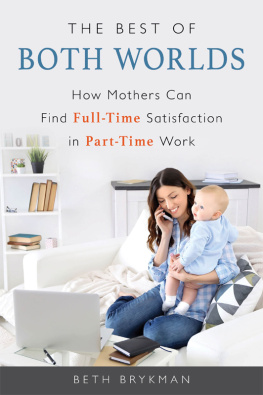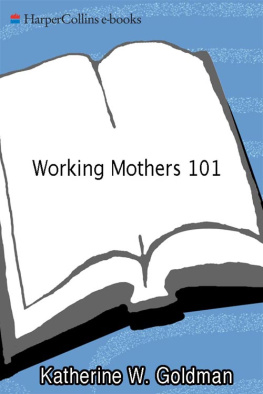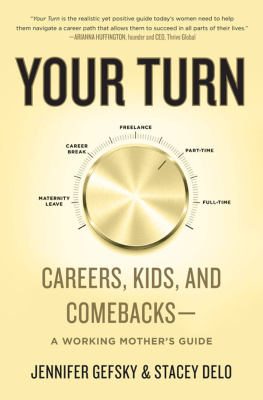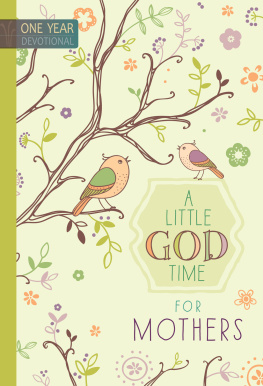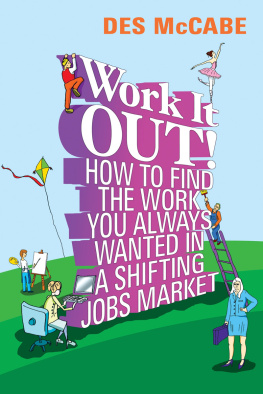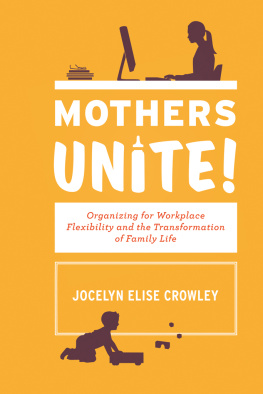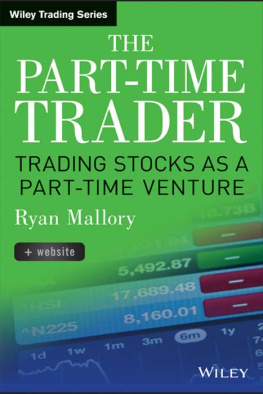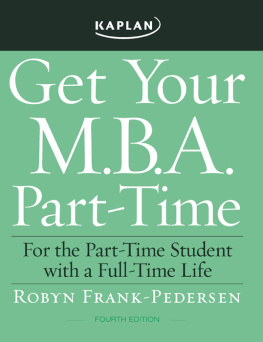
Writing The Best of Both Worlds was fun for me not only because I enjoyed the exploration of the topic but, more importantly, because of the interesting and engaging conversations that I was privileged to hold with women across the country. If it were not for these women telling me their thoughts, feelings, and stories, there would be no book, no story to tell. My sincerest thanks and deepest appreciation goes out to the over 100 mothers and numerous employers who were interviewed.
I also wish to thank my two sisters, Kathy Engelmann and Margo Searson. Kathy helped me in recruiting interviewees on the West Coast, and Margo helped with interviews in the South. Without those interviews, the geographic dispersion of the book would have been incomplete.
I'd also like to thank my daughter Ashley for helping me develop the social media section of the book, also Kelsey, my other daughter, for her support.
And finally, my thanks go to my loving husband and good friend, Kurt, for inspiring me on the topic. He asked numerous questions about the thoughts and feelings of part-time working women after reading my first book, leading me to this one.

I developed a questionnaire to answer not only why women pursue part-time work, but also how they do it and how successful/happy they are. To ensure that I was obtaining candid answers, I conducted each interview individually with the promise of anonymity for those who wanted it.
Initially, I started interviewing a few women whom I knew personally in various parts of the country and then asked them if they could give me the names of two or three other mothers whom I could call. By using this process, I was referred to relatives and friends across the country. Other than ensuring that I was obtaining a geographic dispersion, I randomly selected the referrals to call. By using this methodology, I talked to women with a wide diversity of professions and backgrounds.
I called each woman to ask if she would like to be interviewed for a book that I was writing on part-time employment. Upon receiving a yes, I set up a thirty-minute appointment at a time convenient for her. Despite the appointment being set up for only thirty minutes, the majority of interviewees talked forty-five minutes to an hour. Most of the interviews were conducted via the telephone. I started the interview process by obtaining the demographic information, including items such as name, address, highest level of education, household makeup, full-time work experience, part-time work experience, etc. I assured each interviewee that her demographic information would be kept confidential and that I was using it for sorting purposes only. Then I launched into the questionnaire detailed below.
QUESTIONNAIRE
While I am taking notes on this, I am also tape recording it to ensure that I capture all of your information. Is that all right with you?
I am writing a book regarding part-time work. My definition of a part-time position is working under forty hours per week for money or benefits. The goal of the book is to use experiences much like your own, good or bad, to aid others in obtaining part-time work. I will be asking the same questions to over a hundred women across the US. I would like for you to be totally honest and spontaneous with your answers. All of your answers will be anonymous unless you would like to be quoted. I will ask that at the end of the interview. Ready?
THINKING ABOUT YOUR DECISION TO WORK PART-TIME:
- What was the single-biggest factor causing you to pursue part-time work?
- What was the second-biggest factor?
- How long did you think about part-time employment before you started pursuing it?
What were you doing during that time?
- How did you feel when you made the decision to go part-time?
- How did you feel once you started doing the part-time work?
THINKING ABOUT THE WORK ITSELF:
- What exactly do you do part-time?
- How satisfied are you with your part-time work? Compare that with when you were employed full-time.
NOW LET'S THINK ABOUT HOW YOU OBTAINED YOUR EMPLOYMENT:
- How did you obtain your part-time employment?
- What resources did you use to obtain part-time work?
- Did you follow a path of other part-timers or a role model?
- Did your previous full-time experience help you to obtain employment? If so, how?
- What did you do about daycare?
LOOKING TO THE FUTURE:
- Where do you see yourself in the future regarding employment?
- What do you like best/least about your employment?
- Is there anything that you would like to add that you feel we haven't covered?
Any watch-outs? Any words of wisdom?
- Do you wish for your answers to be anonymous or can I use your first name associated with your answers?
Anonymous _____
Name associated with answers ______
- Do you have any friends whom you could recommend that I call? Who? And what are their phone numbers? Can I use your name?
Thank you for your time.

BOOKS
Aburdene, Patricia, and John Naisbitt. Megatrends for Women. New York: Villard Books, 1992.
Bolton, Michele Kremen. The Third Shift: Managing Hard Choices in Our Careers, Homes, and Lives as Women. San Francisco: Jossey-Bass, 2000.
Brykman, Beth. The Wall Between Women: The Conflict Between Stay-at-Home and Employed Mothers. Amherst, New York: Prometheus Books, 2006.
Burrus, Daniel, with Roger Gittines. Technotrends: How to Use Technology to Go Beyond Your Competition. New York: Harper Business, 1993.
Davis, Kenneth C. Don't Know Much About History: Everything You Need to Know About American History But Never Learned. New York: Perennial, 2003.
Dowd, Maureen. Are Men Necessary?: When Sexes Collide. New York: G. P. Putnam's Sons, 2005.
Ephron, Nora. I Feel Bad about My Neck and Other Thoughts on Being a Woman. New York: Alfred A. Knopf, 2006.
Foley, Jacqueline. Flextime: A Working Mother's Guide to Balancing Career and Family. New York: Marlowe, 2003.
Friedan, Betty. The Feminine Mystique. New York: W. W. Norton, 1963.
Hewlett, Sylvia Ann. Off-Ramps and On-Ramps: Keeping Talented Women on the Road to Success. Boston: Harvard Business School Press, 2007.
Johnson, Tory, and Robyn Freedman Spizman. Take This Book to Work: How to Ask for (and Get) Money, Fulfillment, and Advancement. New York: St. Martin's, 2006.
Judy, Richard W., and Carol D'Amico. Workforce 2020: Work and Workers in the 21st Century. Indianapolis, Indiana: Hudson Institute, 1997.
Kash, Peter Morgan, with Tom Monte. Make Your Own Luck: Success Tactics You Won't Learn in B-School. Paramus, New Jersey: Prentice Hall, 2002.
Kelley, Tom, with Jonathan Littman. The Art of Innovation. New York: Currency Books, 2001.
Lobenstine, Margaret. The Renaissance Soul: Life Design for People with too Many Passions to Pick Just One. New York: Broadway Books, 2006.
Reinhold, Barbara B. Free to Succeed: Designing the Life You Want in the New Free Agent Economy. New York: Penguin Group, 2001.
Richardson, Bradley. Career Comeback: Eight Steps to Getting Back on Your Feet When You're Fired, Laid Off, or Your Business Venture Has Failedand Finding More Job Satisfaction than Ever Before
Next page
